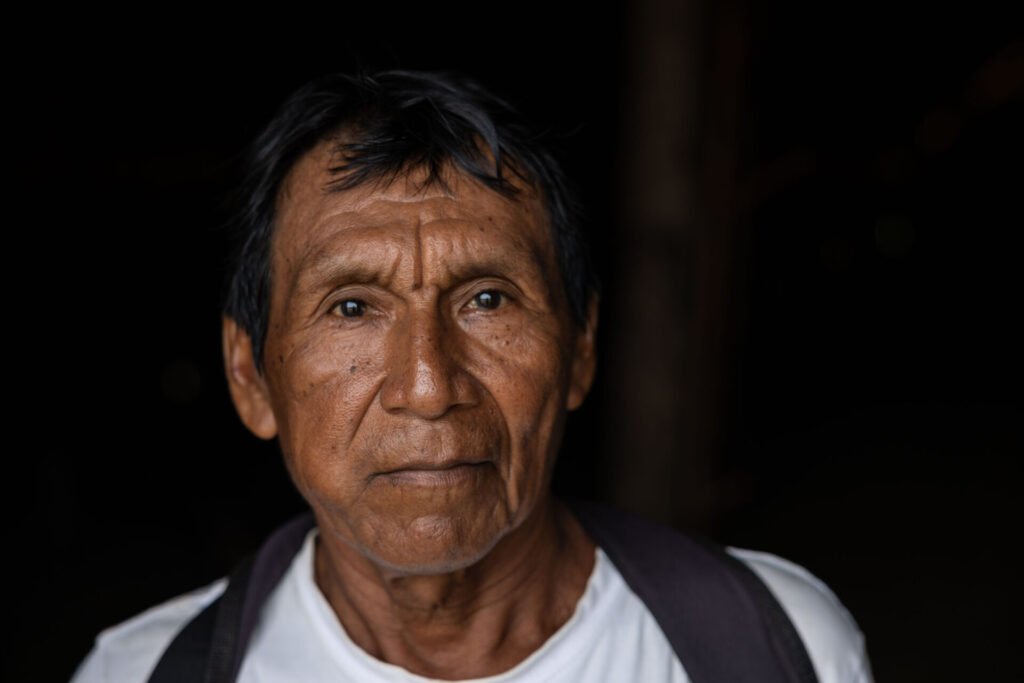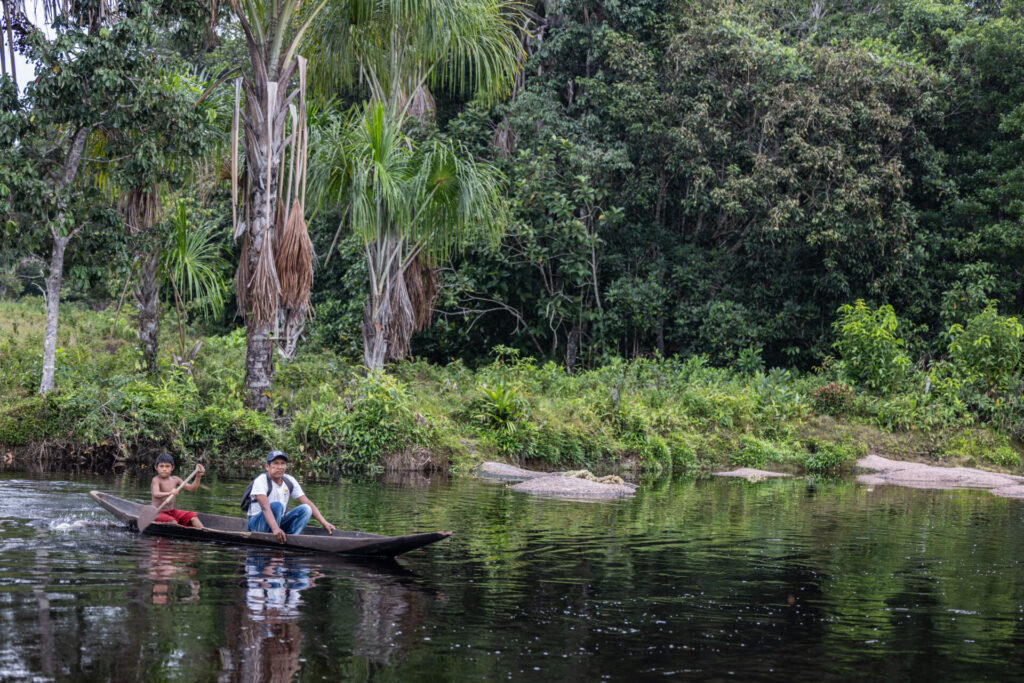
Esteban Rossi, Everland’s senior project officer, sat down with Gregorio Gomez Gutierrez, Asatrizy’s Payé, or spiritual leader, to hear about life and livelihoods in one remote Colombian village – and how a new REDD+ project might help them preserve it.
I recently visited the village of Yapú (Asatrizy), by the Papurí river in the Colombian Amazon. At Yapú, I sat with a Payé or spiritual leader, a kind man of 67 called Gregorio Gomez Gutierrez. I asked Gregorio to share a few words about the history of the place and his journey to becoming a Payé.
Gregorio told me that in old times, the communities lived in various small villages and moved around marrying women that spoke a different language: Tatuyo, Bara, Tukano, Desana and others. He remembers that early in the 20th century, some of his ancestors actually saw the missionaries coming, so they fled to the headwaters of Caño Colorado and hid, so the missionaries wouldn’t find them and so the “feathers wouldn’t be taken from them”.

He refers to the feather crowns and jewellery used in the traditional dances where the community gets together to reflect and celebrate. In nearby places, missionaries opposed and sometimes even banned the use of Yagé and Mambe – prized medicinal plants, revered by local people for good health, rituals and spiritual cleaning. Sadly, over time locals lost those traditions. Eventually, when it was safe, Gregorio and his family returned to Yapú.
As a child, Gregorio spent time with his father who told him about the history of the ancestral hero: the Yurupari, whose legend is widely remembered in many communities across the state of Vaupes. As Gregorio grew, he started helping the Payés, attending meetings and asking questions because “if the alumnus doesn’t ask, the teacher doesn’t explain”. He also assisted his father when preparing annual cultural dances celebrated for the Yurupari.
As part of Gregorio’s education to become a Payé he went to the forest alone for days and weeks to listen. He wasn’t allowed to talk or see women. He began purifying himself, fasting and eating cold fish only when he was allowed. He drank the spiritual medicine Yagé and learned about important plants like the Carayuru and its properties. Over time, he began to see things like the elderly Payés and eventually he earned a place in his community as a spiritual leader.
“We get along, but it wasn’t like that before,” Gregorio explains. A long time ago, in the times of the grandparents, there were many Payés that knew the powerful plants and how to use them. They had the knowledge to support humanity; they understood the rhythm of the forest, the rivers and agriculture.
These Payés saw almost everything because they had “all the knowledge for the persistence and existence of the visible and the invisible world”.
Gregorio says: “Unfortunately some people didn’t like that. Some Payés were happy and others angry. Some Payés didn’t like each other and didn’t want that knowledge of the world to be released. These were difficult times.
“As a consequence, there were conflicts and fights and some deaths. People were poisoned and knowledge was lost. Today we only have a few Payés left because of that.
“Our community, Asatrizy, is becoming more organised, more educated and we are together in one thought – to live well. The wisdom of the Payés is maintained in a recurrent dialogue and we don’t fight anymore. That is good. Unfortunately, we Payés are getting old, and few young men want to stay in the community to study. We need more young men to want to become Payés”.
The Asatrizy community is working to preserve their way of life and ensure sustainable livelihoods for younger generations whilst honouring the rhythm of the forest, the rivers and agriculture. The REDD+ project supports initiatives that help these communities meet their needs while preserving their culture and their forests in perpetuity.
